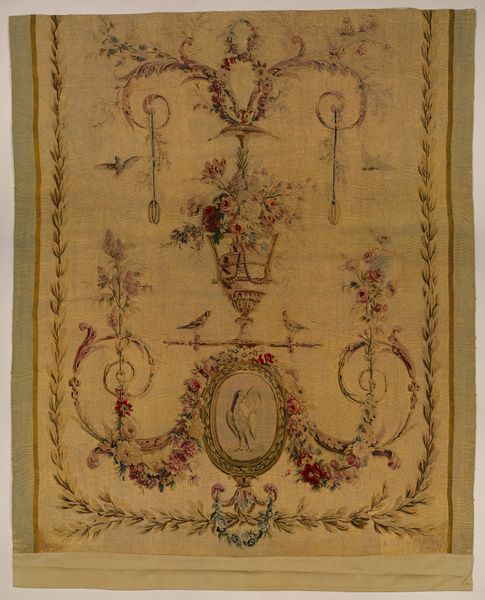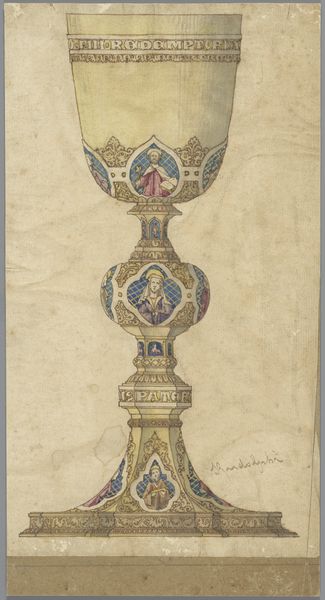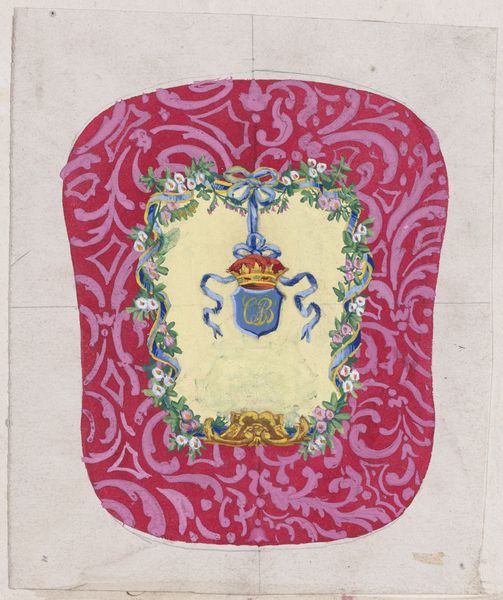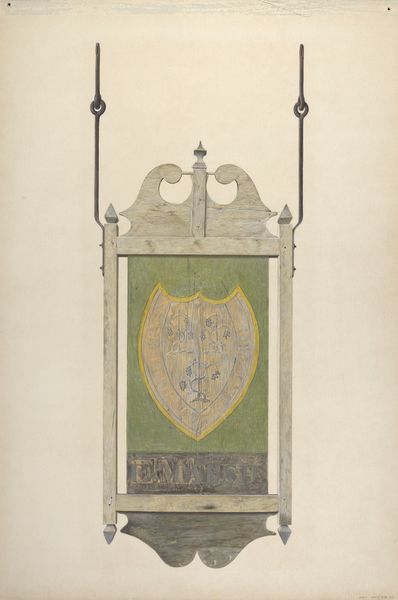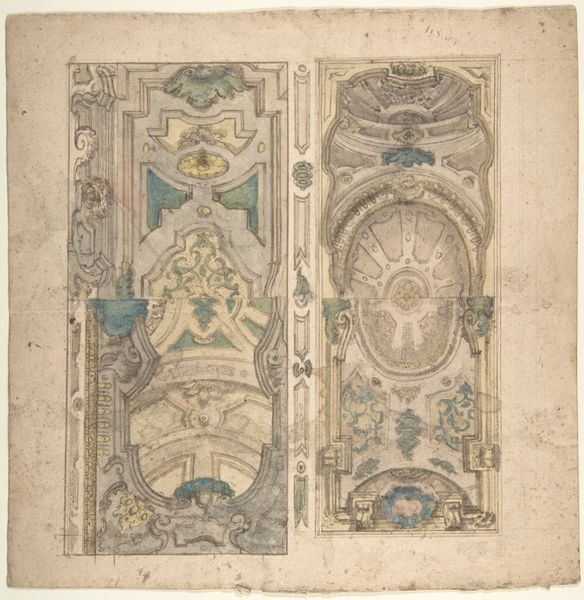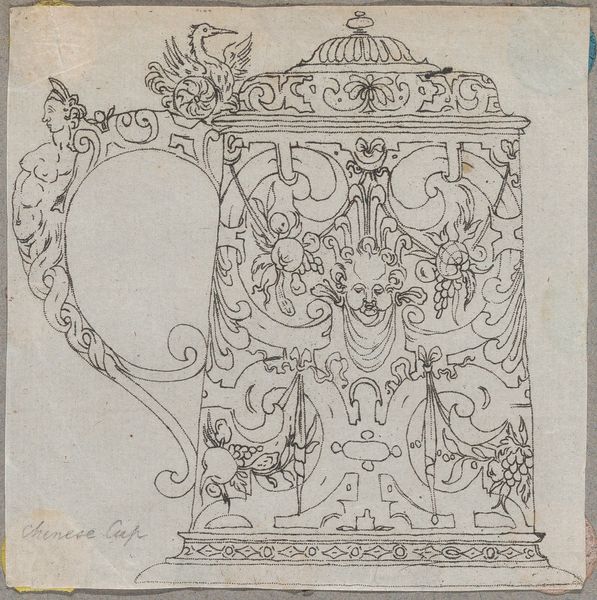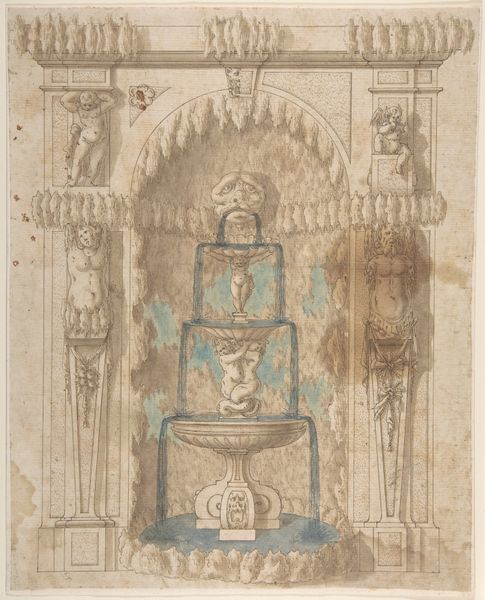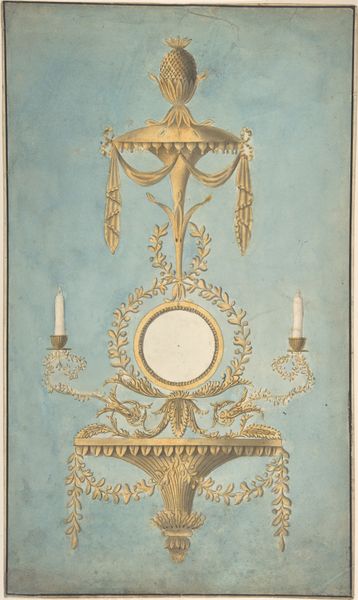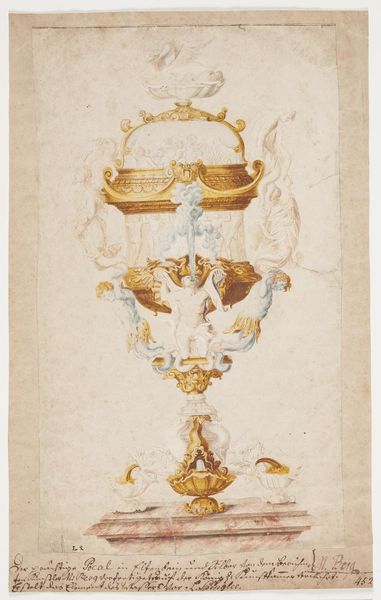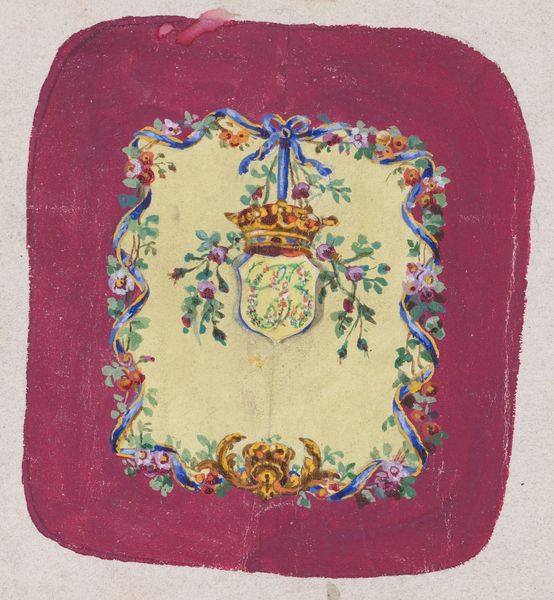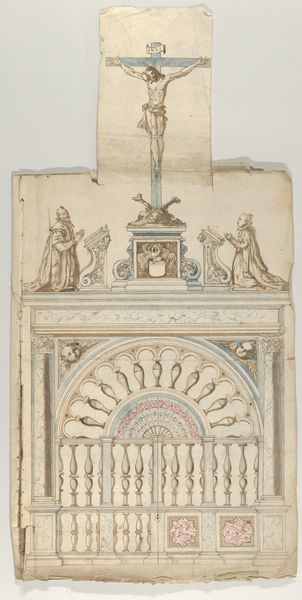
drawing, coloured-pencil, print, watercolor
#
portrait
#
drawing
#
neoclacissism
#
coloured-pencil
#
water colours
#
allegory
# print
#
figuration
#
watercolor
#
coloured pencil
#
decorative-art
Copyright: Public Domain
Curator: Here we have "Ornamental Panel Design," created by an anonymous artist sometime between 1750 and 1890. It’s currently held at the Metropolitan Museum of Art. At first glance, what stands out to you? Editor: Immediately, it’s the symmetry, the pastel hues, the classicism of it all. The design feels so balanced. A central vase is flanked by these two female figures—echoes of antiquity, almost architectural. Curator: Yes, it’s so evocative of Neoclassical aesthetics. And more specifically, it exemplifies the decorative arts of the time, where art was meant to serve social functions but was very much rooted in class divisions and gender roles. It's interesting to observe how these "ornamental panels" likely reinforced or symbolized a family’s identity and aspirations, where the depiction of feminine allegories served specific cultural purposes in representing wealth and refined aesthetic values. Editor: The attention to detail is impeccable. Observe how the blue of the upper vase is subtly echoed in the drapery of the left figure and complemented by its adjacent oval medallion—the artist establishes a rhythmic use of colour that really unifies the composition. It even reminds me of Jacques Derrida's theory of differance. Curator: That interplay is quite deliberate, especially given the societal restrictions and expectations placed on women. These weren't just design choices, but social statements regarding the nature of decorum and virtue. Looking closely, can you talk a little about the artistic elements present in this piece? Editor: Of course, we have a range of visual elements that really emphasize form: a sophisticated handling of line in the drapery, the juxtaposition of hard lines and the softness of watercolours… But to me, the tension arises from the overall deterioration of the artwork: fragments are missing, so we’re never really experiencing the work in its original condition. This creates an additional semiotic layer as we have the presence of absence! Curator: It’s certainly tempting to look at its present state through the lens of time, the remnants telling a story in and of themselves. And your point about the absence also echoes broader absences prevalent in art history. We frequently miss or gloss over the female experience or perspective within such “ornamental” artworks themselves, leaving gaps in our interpretation of this decorative art that continues to highlight these important discussions. Editor: True, our analysis is a dance between what's visually present and the layered implications they contain! Curator: I'm struck, as always, by the enduring relevance of viewing art through both formalist and activist lenses.
Comments
No comments
Be the first to comment and join the conversation on the ultimate creative platform.
